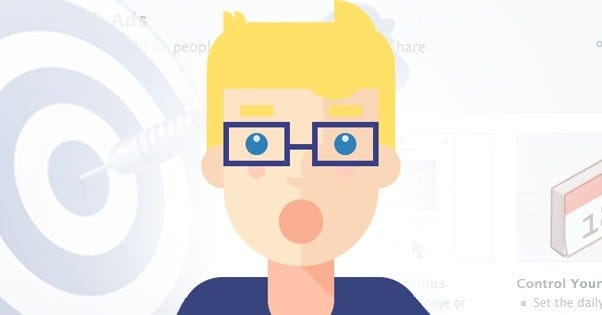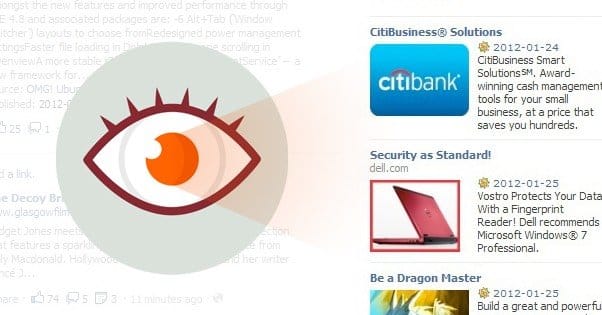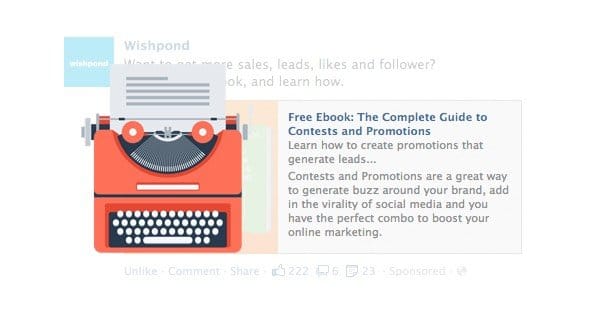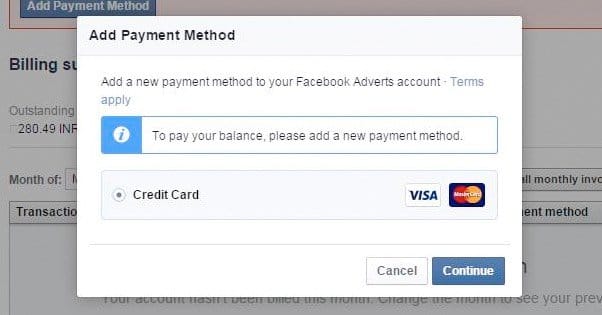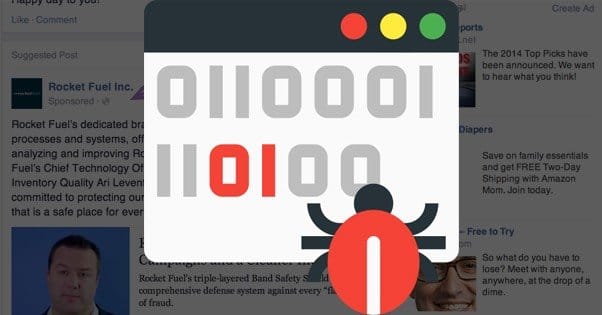 Written by ContentPowered.com
Written by ContentPowered.com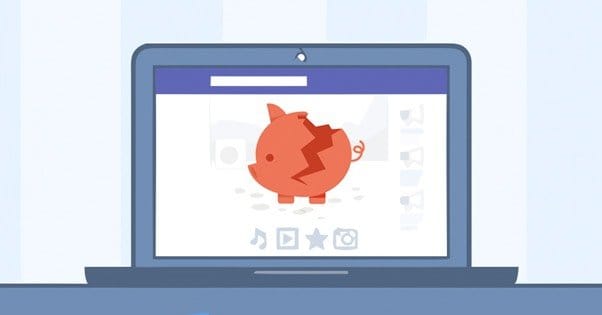
Facebook ads are almost distressingly complex, particularly if you’re just getting into advertising on the social network. Like anything with a lot of complexity, they have a lot of power behind them, if you use them properly. The problem is, with so many moving parts, there are dozens of possible points of failure. Anything and everything can go wrong, leading to lost budgets, poor performing ads or rejections. That’s why I’ve created this list of the most common reasons why your Facebook ads might not be working.
One thing to note is that these all apply only if your ads were approved but aren’t performing for some reason or another. If your ads were rejected entirely, you’ll have to go through an entirely different process to find out why. Thankfully, Facebook usually sends you an e-mail with the general reason why, and you can go from there.
Targeting Issues
These are all issues with ad targeting. I’ve found that targeting is generally the most complex and most prone-to-failure part of Facebook ads. Poor targeting can cause your entire budget to be drained in minutes from worthless clicks, or it can mean your ads are never seen. If your ads aren’t working, this is the first thing I’d check.
1. You Didn’t Exclude Clickfarm Countries
This is a pretty basic bit of geotargeting you need to do for every ad. Countries like the Philippines, Bangladesh, and Pakistan are known as clickfarm countries. This is because some of the largest and most pervasive clickfarms operate from them. Clickfarms are groups of low-paid workers that go around clicking ads and liking pages, which increases metrics for companies but can’t possibly result in a conversion. You can’t make money from clickfarm users, so ban the geographic locations they reside in.
2. You Used an Invalid Audience
Sometimes, it’s easy to use the wrong audience for the wrong ads. For example, if you’re running an ad that has a page like as an objective, you don’t want to use the audience that includes the people already liking your page. They’d see the ad, but they can’t complete the objective, so it’s worthless to try. If you try to use such an audience, Facebook will try to optimize around it, and you’ll get no exposure.
3. Your Target Audience is Too Small
If you go hog wild with targeting options, you’ll end up making your audience smaller and smaller. It used to be possible to prune things down to an audience of just one person, but that was easy to abuse, so they changed it. Now, if you apply too many targeting options, your audience will be too small and your ad won’t run.
4. You’re Targeting Disinterested Users
This is a more insidious problem because everything can look right, and your ad will run, but you won’t get the conversions you’re looking for out of your ads. It’s perfectly valid to run ads targeting middle aged men with low incomes, and Facebook won’t stop you from running an ad with those options. However, if your business is geared towards selling products to upper class women, you won’t get any sales. Know your audience to know your targeting.
5. You’re Targeting the Wrong Times
Facebook has an option for running ads, which allows you to choose specific days and times to run your ads. For example, if you know most of your users are active at 5pm on Wednesday, you can schedule your ads to run primarily during that timeslot. Be aware, however, that if you misjudge the activity level of your users, or if you have stiffer competition in those times, you’ll end up paying more for less exposure.
Image Issues
Another possible issue with your ads is your image. Facebook is a very graphical platform. Just look at any news feed; every other post is an image in some way, and many of them are sponsored ads. Sidebar ads are the same; they rely on an image to grab attention. I would argue that your image is more important than your copy. The copy convinces people to click, but the image gets them to look to read the copy.
6. Your Image is Too Small
This is a particular issue for sidebar ads, which have a very small piece of real estate to use. If you’re trying to condense a 1200 pixel image into the 200 pixel space you have, you lose a lot of detail. If that image was, say, a crowd shot, or a wide view of complex machinery, it will look like a mess when compressed. Some images work when scaled down, others do not. Always preview your image at small size to make sure it fits.
7. Your Image Blends In
Facebook is image-heavy, but the site design itself is blue, black, gray and white. I don’t care what your branding is or what your company design is; trying to use those colors on Facebook is a death sentence. Users are used to ignoring the Facebook system surroundings in favor of the much more garish images everywhere. If you blend in with Facebook’s colors, you’ll be ignored the same way.
8. Your Image Isn’t Attractive
This one is the most insidious of the image-related problems, and much like targeting, it’s because it’s very subjective. An image that works well for one audience might be very off-putting for another audience. You need to know your audience and their relationship with your business, so you can pick images that are appealing to them.
9. You’re Conveying the Wrong Emotion
This is a similar problem to the previous one, but it’s a specific enough issue I’d like to talk about it separately. Basically, images have an emotional tinge, and you want to pick the right emotions to match your copy. You don’t want a picture of an angry person when you’re selling a piece of software, it makes people think of frustration caused by software issues.
10. Your Image is Boring
Remember, your image is what draws people to look at your ad in the first place. If that image doesn’t have enough interesting going on with it, who is going to give it a second glance? A picture may be worth a thousand words, but there are definitely cases where one set of 1,000 words is far more interesting than another. Make sure your images are eye-catching.
Copy Issues
I mentioned before that your image is possibly more important than your copy, but that’s not precisely true. They’re both very important. Your image can only do so much; you need the copy to drive home the bargain and get people to click to do whatever it is you want them to do. This is where techniques like clickbait come from, even though they’re banned by Facebook.
11. Your Headline is Boring
The opposite of clickbait is a basic headline that provides no information. Would you want to read an article titled “A Post About Facebook Ads”? Probably not. On the other hand, you’re a lot more likely to click on a title like “30 Reasons Your Facebook Ads Aren’t Working”. It’s all about the value; users know what they’re getting into. The same goes for any ad headline.
12. Your Copy Lacks a Value Proposition
Facebook doesn’t give you a lot of space in your ads to make your case, so you need to use what little you have well. It’s all about the value proposition. You need to figure out what users can get out of clicking your ad and make sure they know it’s both something they need, and something they can get by clicking.
13. You Make Dated References
This one is particularly problematic when you’re trying to reference pop culture and memes. If you’re making references to celebrity couples that no one has cared about for years, you might be making dated references. On a more common note, this crops up when you run holiday ads for days after the holiday has passed, because you didn’t set a time limit and haven’t turned them off.
14. You Have No Call to Action
“Yes, but what do I actually DO?” If your users look at your ads and can ask this question, you’re missing a call to action. Is your ad trying to get them to view your site? Are you trying to get a page like? Are you going for app engagement? Every objective has an associated call to action that you need to make.
15. Your Copy is Offensive in Some Way
This is a rare issue, and it’s the most subjective of the issues with copy listed here. A lot of offensive language is caught by Facebook and rejected, but sometimes something slips through that seems innocuous but is actually offensive. You never know what someone is going to find offensive, so try to run your copy by a few different people before you put it in motion, just in case.
Pricing Issues
Issues with pricing are typically easy to resolve, but they’re not always the first place you look when something goes wrong. I would say, though, that they’re easy enough to check off the list that you should always check for them first.
16. Your Payment Method was Declined
Sometimes, a financial institution or a bug in the system will cause an issue with payment processing. If a payment is declined, either by a bank, by the balance of a prepaid card running dry, or by a Paypal account emptying, Facebook will stop your ad campaigns until a new payment method is entered an any unpaid balance is paid. It’s easy enough to do this, at least. If a bank declined a payment, call them and tell them it’s valid.
17. Your Maximum Ad Spend is Too Low
Facebook ads are generally pay per click, or at least pay per objective. This boils down to discrete numbers, even if those numbers are in pennies. Most of the time, you’ll be charged a few quarters per click, sometimes a few dollars depending on the niche. If you don’t have enough money, or if your daily cap is set too low, you’ll only get a few clicks or none at all. You can always try raising your minimum to get more traffic.
18. Your Payment is Still Pending
A pending payment is much the same as a declined payment; Facebook will cease running your ads until payment is made. How much outstanding balance is needed to reach this level? That depends on your cumulative ad spend for the month. You have a cap that starts at $25. Once you rack up $25 in ad spend, Facebook charges you and raises the cap. This cycle continues until your cap is pretty large, around $500. Any pending payment will cease the process.
19. Your Bid is Too Low to Reach Anyone
Facebook has two types of ads; premium and marketplace. Premium are more expensive, but they guarantee you views. Marketplace can save you a lot of money, but you need to bid high enough to make sure you get views. If you have five competitors and only four slots to go around, you need to out-bid at least two or three competitors to guarantee yourself a spot.
20. You’re Paying for Impressions, Not Objectives
This is very common, and is partially a symptom of poor targeting. Pay per view ads are fine, if you have the compelling copy, compelling image, and compelling offer that encourages those viewers to click and convert. If none of those happen, Facebook will happily display your ad to people who never bother to click it. You still pay, though, because it was displayed to them.
Miscellaneous Issues
The remaining ten items on this list are all issues that didn’t fit in any one category. They’re all various issues that I’ve encountered while troubleshooting Facebook ads, and they can all have a dramatic negative impact on your overall ad performance. If all else fails, one of these is probably your problem.
21. Your Ads are Turned Off
Believe it or not, this is a common problem. This is because there are three levels in Facebook ads, and they all have individual off switches. The ad level, the ad set level, and the ad campaign level all can be disabled. If the ad level is on, and the campaign is on, but the set is off, the ads won’t run. Check each level and make sure it’s enabled to make sure your ads run.
22. Your Landing Page Doesn’t Convert
This isn’t an issue with Facebook ads so much as it is with your landing page. You can have very interesting ads funneling people to a page that just doesn’t look good, and doesn’t convert. You’ll have to dig into the wonderful world of conversion rate optimization to troubleshoot this problem.
23. Your Link is Broken
Facebook will test your link at the time of ad review to make sure it works. If at any point after that, your page moves or breaks, the ad runs just fine. It’s up to you to make sure the page is still visible. Furthermore, Facebook just checks to see if the link works, not what page it is; a 404 page or a redirect to your homepage is perfectly viable for ads, and Facebook won’t care. Always double-check the ad works by clicking your ad, not just by loading the page manually.
24. Your Competition is Too Strong
This one is partially mentioned above; Facebook is one of the top advertising platforms in the world. As such, a lot of people are using it to market, and that means a lot of competition for the attention of your potential users. That’s why reach is declining; more content than ever is being shown, but users have the same amount of attention as they ever have. Sometimes, your niche is just packed with competition and you’ll need to try different targeting or a higher bid if you want to be visible.
25. You’re Not Following Up on Leads
This is another off-site issue most of the time, but it can happen on Facebook as well. If you run an ad to get people to like your page, that’s fine. If your page is idle, though, that’s not fine. People don’t like to follow pages that don’t post anything. You need to follow up on the leads that ads provide, whether that means on your site, through your newsletter, or on your page itself.
26. You Don’t Have a Measurement of Value
This is a more nebulous state of failure. Sometimes, your ads are working, and they’re working perfectly. The problem is, you have no idea. You haven’t been tracking the right metrics and comparing them in the right way. Jon Loomer has a good guide for what you should be tracking, how it matters, and how you should do it.
27. You Chose the Wrong Ad Objective
Facebook ad objectives apply a level of passive optimization on the back end, that you can’t replicate with targeting or settings yourself. It’s all on Facebook’s end. Therefore, you have to pick the right objective. If you’re running an ad to get people to click through to your website and buy a product, you don’t want it shown to an audience optimized for clicking Facebook links and liking pages, but not leaving the site.
28. Your Ad Frequency is Too High
Your ad frequency is a measurement of how often the average user in your audience sees your ad. If you have an audience of 100 and every single person sees your ad exactly once, it’s a frequency of 1. That’s your ideal goalpost. If it approaches 2, that’s people seeing your ad more often than is necessary. If it’s under 1, you’re missing part of your audience and either need to increase your bid, run your ad longer, or narrow your targeting.
29. Your Ad Has Grown Stale
This can be a symptom of either a high ad frequency, or of an ad that has run too long. After a user has seen an ad, they generally don’t care to see it again. If they’ve seen it several times, it’s long since gone stale, and they don’t particularly care about it. They might even assign a negative opinion of your brand to their minds. Change up your ads, and change them frequently, for maximum viability.
30. You’re Not Testing Ad Variations
Testing is the lifeblood of a successful ad campaign. You never know when a slight change in language, a different image, or a different set of targeting options will dramatically increase your engagement rates. Always be experimenting, never stagnate.
